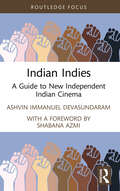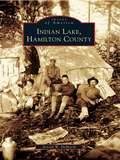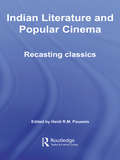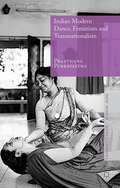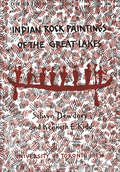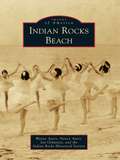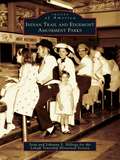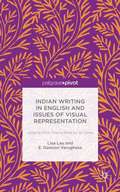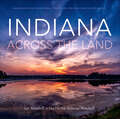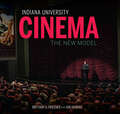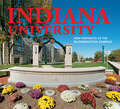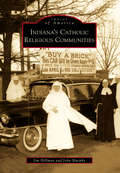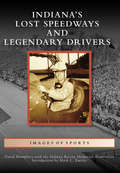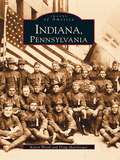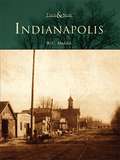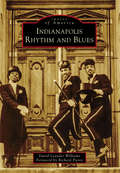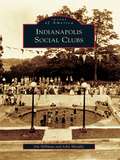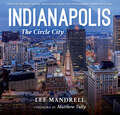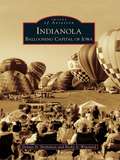- Table View
- List View
Indian Horror Cinema: (En)gendering the Monstrous
by Mithuraaj DhusiyaThis book studies the hitherto overlooked genre of horror cinema in India. It uncovers some unique and diverse themes that these films deal with, including the fear of the unknown, the supernatural, occult practices, communication with spirits of the deceased, ghosts, reincarnation, figures of vampires, zombies, witches and transmutations of human beings into non-human forms such as werewolves. It focusses on the construction of feminine and masculine subjectivities in select horror films across seven major languages – Hindi, Tamil, Telugu, Kannada, Bangla, Marathi and Malayalam. The author shows that the alienation of the body and bodily functions through the medium of the horror film serves to deconstruct stereotypes of caste, class, gender and anthropocentrism. Some riveting insights emerge thus, such as the masculinist undertow of the possession narrative and how complex structures of resistance accompany the anxieties of culture via the dread of laughter. This original account of Indian cinematic history is accessible yet strongly analytical and includes an exhaustive filmography. The book will interest scholars and researchers in film studies, media and cultural studies, art, popular culture and performance, literature, gender, sociology, South Asian studies, practitioners, filmmakers as well as cinephiles.
Indian Indies: A Guide to New Independent Indian Cinema (Routledge Focus on Film Studies)
by Ashvin Immanuel DevasundaramThis book offers a concise and cutting-edge repository of essential information on new independent Indian films, which have orchestrated a recent renaissance in the Bollywood-dominated Indian cinema sphere. Spotlighting a specific timeline, from the Indies’ consolidated emergence in 2010 across a decade of their development, the book takes note of recent transformations in the Indian political, economic, cultural and social matrix and the concurrent release of unflinchingly interrogative and radically evocative films that traverse LGBTQ+ issues, female empowerment, caste discrimination, populist politics and religious violence. A combination of essential Indie-specific information and concise case studies makes this a must-have quick guide to the future torchbearers of Indian cinema for scholars, students, early career researchers and a global audience interested in intersecting aspects of cinema, culture, politics and society in contemporary India.
Indian Lake, Hamilton County (Images of America)
by Arnold W. DemarshThe village of Indian Lake was formally founded in 1858, during a time when many small communities were springing up in the Adirondacks as a result of the lumber industry. In 1889, Dr. Thomas C. Durant established a branch of the Delaware and Hudson Railroad that connected Saratoga Springs and North Creek. Through the later part of the 19th century and early-20th century, the Adirondack Mountains became a paradise destination for the rich and famous. Indian Lake, which began as a stopover for Blue Mountain Lake and Raquette Lake, quickly grew into a tourist center in its own right because of its ideal location and beauty. Indian Lake, Hamilton County is a pictorial journey through the golden age of this region, a haven of beauty and nature.
Indian Literature and Popular Cinema: Recasting Classics (Routledge Contemporary South Asia Series)
by Heidi R.M.PauwelsThis book is about the popular cinema of North India ("Bollywood") and how it recasts literary classics. It addresses questions about the interface of film and literature, such as how Bollywood movies rework literary themes, offer different (broader or narrower) interpretations, shift plots, stories, and characters to accommodate the medium and the economics of the genre, sometimes even changing the way literature is read. This book addresses the socio-political implications of popular reinterpretations of "elite culture", exploring gender issues and the perceived "sexism" of the North Indian popular film and how that plays out when literature is reworked into film. Written by an international group of experts on Indian literature and film, the chapters in this book focus on these central questions, but also cover a wide range of literary works that have been adapted in film. Each part of the book discusses how a particular genre of literature has been "recast" into film. The individual chapters focus on comparisons and close studies of individual films or film songs inspired by "classics" of literature. The book will be of interest to those studying Indian film and literature and South Asian popular culture more generally.
Indian Modern Dance, Feminism and Transnationalism
by Prarthana PurkayasthaThis book examines modern dance as a form of embodied resistance to political and cultural nationalism in India through the works of five selected modern dance makers: Rabindranath Tagore, Uday Shankar, Shanti Bardhan, Manjusri Chaki Sircar and Ranjabati Sircar.
Indian Movie Entrepreneurship: Not just song and dance (Discovering the Creative Industries)
by Ruth Rentschler Rajeev KamineniOne of the world’s most prolific creative industries, the Indian movie industry has received scant attention for its spirit of enterprise. Indian Movie Entrepreneurship addresses this omission. For many readers, it might come as a surprise that the Indian movie industry is not just Bollywood and that it has several regional clusters, which are just as vibrant, with a significant output. The authors begin by outlining the contours of Indian cinema and the different regional language hubs that form part of the larger picture. The reader is then offered a glimpse into the actual process of making a film from day zero to release day. The key players in the Indian movie ecosystem are analysed, with the central role of the producer highlighted. Concluding with a look into the future of the entrepreneurial process in the Indian movie industry, the authors illuminate the shifting parameters of distribution and exhibition. Appealing to those interested in understanding the entrepreneurial journey of the Indian movie industry, the book provides a sneak peek into the business landscape of India more broadly.
Indian Rock Paintings of the Great Lakes (Quetico Foundation series #4)
by Selwyn Dewdney Kenneth E. KiddThis book describes in word and illustration the results of an exciting quest on the part of its authors to discover and record Indian rock paintings of Northern Ontario and Minnesota. Numerous drawings were made from these pictographs at a hundred different sites; the originals range in age from four to five hundred years to a thousand, and were done with the simplest materials: fingers for brushes, fine clay impregnated with ferrous oxide giving the characteristic red paint. Where an overhanging rock protected a vertical face from dripping water or on dry, naked rock faces the Indians recorded the forest life with which they lived in intimate association—deer, caribou, rabbit, heron, trout, canoes, animal tracks—and also abstractions which puzzle and intrigue the modern viewer. Many of the paintings could only have been done from a canoe or a convenient rock ledge.<P><P> Selwyn Dewdney travelled many thousands of miles by canoe to make the drawings of the pictographs which illustrate every page of this fascinating and attractive book. He provides also a general analysis of the materials used by the Indians, of their subject-matter and the artistic rendering given to it, and his artist's journal records in detail the sites he visited, the paintings he found at each, the comparisons among them that came to mind, the references to rock paintings in early literature of the Northwest. Kenneth E. Kidd contributes a valuable essay on the anthropological background of the area, linking the rock paintings with early cave art in, for example, France and Spain, describing the life of the Indians in the Shield country, and commenting on what the pictographs reveal of their makers' attitudes to their external world and of their thinking.<P> This is a book which will appeal to a wide audience: to those interested in primitive art forms and in Canadian art in general, to all students of the early history of North America, to travellers who in increasing numbers follow the canoe trails of the Shield lakes and rivers.
Indian Rocks Beach (Images of America)
by Wayne Ayers Nancy Ayers Jan Ockunzzi Indian Rocks Historical SocietyAccording to legend, Indian Rocks got its name when Tocobaga Indians brought their ailing chief from inland Florida to drink from the area's sulfur springs, prized for their medicinal qualities. Their leader miraculously recovered, as the story goes, and the tribe returned each year to the place where large rocks surrounded the healing spring. The natural beauty of the barrier island that became Indian Rocks Beach was what attracted Harvey Hendrick to establish his homestead here in the mid-1890s. Years later, he recalled, "I liked the place, I thought it was the most beautiful place on God's green footstool, and I think so yet." The charm and character of this little seaside community is evident in these historic photographs, from the days when the old swing bridge was the center of activity, to the booming post-World War II era when tourists and residents proclaimed Indian Rocks Beach as their special place.
Indian Trail and Edgemont Amusement Parks (Images of America)
by Lehigh Township Historical Society Johanna S. Billings Sean BillingsIndian Trail and Edgemont Amusement Parks highlights the history of two legendary amusement parks in Lehigh Township. Unique images cover Indian Trail Park from its founding by Samuel and William Solliday in 1929 to its closing in 1984. Photographs of Edgemont Park recall its days as a trolley park, started by the Blue Ridge Traction Company. These images are sure to bring back memories of the rides, games, and thrills that kept people coming back year after year.
Indian Writing in English and Issues of Visual Representation: Judging More Th an a Book by Its Cover
by E. Dawson Varughese Lisa LauThis book examines the use of book covers as marketing devices, asking what exactly they communicate to their readers and buyers, and what images they associate with a genre and create about a culture. Focusing on Indian women's writing in English, it combines the study of text with the study of materiality of the book.
Indiana Across the Land
by Lee Mandrell DeeDee Niederhouse-MandrellThe captivating landscapes of America's heartland offer an inviting escape from the everyday in Indiana Across the Land. Although a road trip from the shores of Lake Michigan to the Ohio River could be accomplished in only six hours, photographers Lee Mandrell and DeeDee Niederhouse-Mandrell take readers the long way around the Hoosier state, embarking on a breathtaking journey across the seasons, down windswept dunes, through old-growth forests, over burbling creeks and yawning chasms, past icy lighthouses and worn-down barns, and into the southern cypress swamps. More than 140 photographs capture the beauty of the Indiana Dunes National Lake Shore, Ouabache State Park, Turkey Run State Park, Squire Boone Caverns, and many other landmarks and natural wonders, both well-known and rarely glimpsed.
Indiana Covered Bridges: Indiana's Covered Bridge Capital
by Rachel Berenson Perry Marsha Williamson MohrA symbol of Indiana's past, the covered bridge still evokes feelings of nostalgia, romance, and even mystery. During the 19th century, over 500 of these handsome structures spanned the streams, rivers, and ravines of Indiana. Plagued by floods, fire, storms, neglect, and arson, today fewer than 100 remain. Marsha Williamson Mohr's photographs capture the timeless and simple beauty of these well-traveled structures from around the state, including Parke County--the unofficial covered bridge capital of the world. With 105 color photographs, Indiana's Covered Bridges will appeal to everyone who treasures Indiana's rich architectural heritage.
Indiana Originals: Hoosier Heroes & Heroines
by Ray E. BoomhowerHoosier history overflows with bold visionaries, noble heroes and lovable rogues. May Wright Sewall struggled to uplift womankind and unflinchingly called for peace in a world sleepwalking toward conflict. In the guise of Abe Martin, Kin Hubbard graced the Indianapolis News's back page for twenty-six years with folksy humor. Combat photographer John A. Bushemi bravely faced the terrors of war and perished capturing its violence. Audacious automotive pioneer Carl G. Fisher went to any length to promote himself, even flying a car via a hot-air balloon. Drawing on more than thirty years of experience, author Ray E. Boomhower, the dean of Hoosier biographers, brings together forty of the most notable figures from the nineteenth state.
Indiana University Bloomington: America's Legacy Campus (Well House Books)
by J. Terry Clapacs Susan Moke Dina Kellams Carrie SchwierAmid the forested hills of southern Indiana stands one of America's most beautiful college campuses. Indiana University Bloomington: America's Legacy Campus, the new edition, returns the reader to this architectural gem and cultural touchstone. Revised and updated to include new buildings and features of campus life, it is a must have for any Hoosier. The IU Bloomington campus, rich in architectural tradition, harmonious in building scale and materials, and surrounded by natural beauty, stands today as a testimony to careful campus planning and committed stewardship. Planning principles adopted in the very early stages of campus development have been protected, enhanced, and faithfully preserved, resulting in an institution that can truly be called America's Legacy Campus. Lavishly illustrated and brimming with fascinating details, this book tells the story of Indiana University—a tale not only of buildings, architecture, and growth, but of the talented, dedicated people who brought the buildings to life. Completely updated with new buildings and an epilogue, and now even more lavishly illustrated, this new edition is a lasting tribute to the treasure that is Indiana University Bloomington.
Indiana University Cinema: The New Model (Well House Books)
by Brittany D. Friesner Jon VickersIn its first ten years, a small Midwestern cinema has attracted some of the most intriguing and groundbreaking filmmakers from around the world, screened the best in arthouse and repertory films, and presented innovative and unique cinematic experiences.Indiana University Cinema tells the story of how the cinema on the campus of Indiana University Bloomington grew into a vibrant, diverse, and thoughtfully curated cinematheque. Detailing its creation of a transformative cinematic experience throughout its inaugural decade, the IU Cinema has arguably become one of the best venues for watching movies in the country. Featuring 17 exclusive interviews with filmmakers and actors, as well as an afterword from Jonathan Banks (Breaking Bad and Better Call Saul), Indiana University Cinema, is a lavishly illustrated book that is sure to please everyone from the casual moviegoer to the most passionate cinephile.
Indiana University: New Portraits of the Bloomington Campus
by Kendall ReevesSet in the rolling hills of southern Indiana, Indiana University Bloomington is widely acknowledged to be one of the most picturesque college campuses in the United States Indiana University: New Portraits of the Bloomington Campus offers Hoosiers the chance to discover or revisit the campus for themselves and appreciate stunning new buildings and improvements in landscaping and facilities. During its two-hundred-year history, the Bloomington campus has grown out from its original core while maintaining its focus on its architectural atheistic. Indiana University Bloomington now occupies nearly 2,000 acres, and the beauty and harmony of its limestone buildings set against breathtaking natural scenery make the campus a treasure that all Hoosiers enjoy.Indiana University: New Portraits of the Bloomington Campus offers Hoosiers the chance to travel back home, relive past friendships, scholarly achievements, Little Fives, and Hoosier victories, and wander again, if just for a moment, through Dunn's Woods, the Cox Arboretum, and the iconic Sample Gates.
Indiana's Catholic Religious Communities
by John Murphy Jim HillmanWith expanding Irish, Swiss, French, and German immigrant populations, the state of Indiana evolved from individual explorers, trappers, hunters, and traders into family-focused communities of farmers and craftsmen. Emerging from the former Indiana Territory, the state's early population was in need of education, health care, and social services to assist young families, the poor, the infirm, and the elderly. These needs were frequently met by Catholic religious orders, including the Benedictines, Sisters of Providence, Franciscans, Daughters of Charity, and other established organizations of dedicated religious men and women.
Indiana's Lost Speedways and Legendary Drivers (Images of Sports)
by David HumphreyFrom the Indianapolis 500 Motor Speedway to the dirt oval tracks in small Indiana towns, thousands of Hoosiers frequent the raceway of their choice each year. Today, there are an estimated 40 asphalt, clay, and dirt-covered oval tracks in Indiana where race fans cheer local drivers, often navigating jalopies pieced together from junkyard parts, to victory lane. Though many racetracks remain in operation throughout the state, dozens have fallen to the wayside over the past 100 years. Forever in remembrance are the famous and not so famous Indiana-born drivers who thrilled fans at those now defunct tracks. Evansville native Charlie Wiggins won the Gold and Glory Sweepstakes four times. Bob Kinser from Bloomington raced over 40 years and is an inductee of the National Sprint Car Hall of Fame, and Tom Cherry of Muncie won the Little 500 four times.
Indiana, Pennsylvania
by Karen Wood Doug MacgregorNestled in the hills of scenic western Pennsylvania, the borough of Indiana is a center of learning and the seat of county government. Incorporated in 1816, the borough lies in the heart of the state's bituminous coal region. Indiana has been home to a wide variety of industries and businesses, from breweries and lumber companies to higher education and Christmas tree farms. Among thousands of successful families and individuals, Indiana is famous as the home of actor Jimmy Stewart, Gov. John S. Fishe, and author Ed Abbey.Indiana, Pennsylvania is a compilation of stunning photographs that reveal a historical community. Included in this valuable history are the secret connections to the Underground Railroad, the arrival of electricity and telephones, the first automobiles, and the last Civil War veteran. Indiana, Pennsylvania also features many parts of the borough that have vanished, such as Indiana's early buildings and most of the old downtown hotels.
Indianapolis
by W. C. MaddenInaugurated as the state capital in 1825, Indianapolis was patterned after the nation's capital and laid out on a mile-square grid with Monument Circle at its center. As the city grew and experienced the tumult of the Civil War, legislators decided to erect a monument to the war's fallen servicemen. In 1902, one of the world's most outstanding memorials was completed-the Soldiers and Sailors Monument. Surrounding Monument Circle, "The Circle City" gets its nickname from the prominence and historical significance of the central city structure. Throughout the years, Indianapolis has maintained its commitment to honoring the achievements of Hoosiers. This dedication to Indiana has given the capital its own rich history, told not only through monuments and memorials, but also through the architecture, parks, businesses, and people that make up the heart of Indianapolis. This new book documents the heroes and history of the city, using an impressive collection of vintage photographs from the late 1800s through the early 1900s juxtaposed against present-day images.
Indianapolis Rhythm and Blues (Images of America)
by David Leander WilliamsIndiana Avenue was traditionally the host to some of America's premier, world-renown entertainment icons in various genres. Along this winding, brightly lit thoroughfare were nightclubs, lounges, supper clubs, taverns, juke joints, and holes-in-the-wall that celebrated the best of the best in entertainment that America had to offer, from the 1920s on into the 1970s. On the bandstand at Denver Ferguson's Sunset Terrace Ballroom, the elegantly attired crooner Nat King Cole, in a sparkling blue silk suit, delivered his signature song "Mona Lisa." Nearby, B.B. King sang his 1973 down-home blues classic "To Know You is to Love You." At Tuffy Mitchell's Pink Poodle nightclub, "Moms" Mabley made the audience roar with laughter during her sidesplitting comedy routine. Indiana Avenue truly was the place to be for the best in entertainment.
Indianapolis Social Clubs (Images of America)
by John Murphy Jim HillmanMore than banquet halls, golf courses, and swimming pools, social clubs were a haven for businessmen, politicians, and community leaders, offering respite from public scrutiny. Defining Indianapolis, the clubs were stoic agents of power and segregation, providing clear historical snapshots of Hoosier pomp and circumstance. The clubs did more than produce Olympic swimmers, world-class golfers, and tennis professionals; they were Indianapolis's multigenerational playgrounds. There were the politics and business dealings at the Columbia Club and the Indianapolis Athletic Club, the golfing, tennis, and formality of Woodstock, Meridian Hills, and other country clubs, and the family fun in the sun at Riviera, Devon, and Olympia. These organizations offered more than magical summers with family and friends; they were the places to be seen.
Indianapolis in Vintage Postcards (Postcard History)
by W. C. MaddenIn the late 1800s, postcards of Indianapolis began appearing in mailboxes throughout the country. Since that time, the many prominent monuments, buildings, and parks of the Hoosier capital have been featured on countless cards.Using an impressive collection of these images, author W.C. Madden takes the reader on an historic journey through Indianapolis from 1890 to 1950, providing a visual history of the development of the city. Indianapolis experienced great growth during the first half of the 20th century, which gave rise to innovative art and architectural structures, many that serve as the subject of postcards featured here. The Soldiers and Sailors Monument, the Indiana World War Memorial, the Indianapolis Motor Speedway, Union Station, and Claypool Hotel, to name a few, are all highlighted.
Indianapolis: The Circle City
by Lee MandrellA beautifully photographed tour of the Indiana capital from city streets to state fairs to the world’s biggest Christmas tree.Indianapolis shines like never before in this one-of-a-kind book filled with stunning images. Photographer Lee Mandrell showcases a Circle City of unique architecture and natural areas, outstanding museums, and historic landmarks. Readers will be drawn into the rich culture, history, and art of Indianapolis as well as all things modern.Stroll along the famous Canal Walk. Explore the largest children’s museum in the world. Wander through the city’s parks and enjoy beautiful seasonal displays. Marvel at the campuses of Butler University and IUPUI—and see the two hundred eighty-four-foot-tall Soldiers and Sailors Monument covered in lights and the world’s largest Christmas tree.“This book will inspire with joy and reverence a greater love of Indianapolis.” —Senator Dick Lugar
Indianola: Ballooning Capital of Iowa (Images of Aviation)
by Dennis D. Nicholson Becky S. WigelandIndianola, founded in 1849, is the county seat of Warren County, Iowa. It is located 12 miles south of Iowa's capital, Des Moines, at the intersection of U.S. highways 65 and 69 and state highway 92. The city is home of the National Balloon Museum, begun in 1972; the National Balloon Classic, an annual nine-day balloon rally; the Balloon Federation of America's national office; Simpson College; the Des Moines Metro Opera, a widely acclaimed summer opera festival; and is host to the Iowa Wine Festival each summer. This book focuses on the history of ballooning in Indianola, which hosted the U.S. National Hot Air Balloon Championships from 1970 to 1988, and the National Balloon Classic from 1989 to the present. This is the story of how Indianola became the ballooning capital of Iowa.

